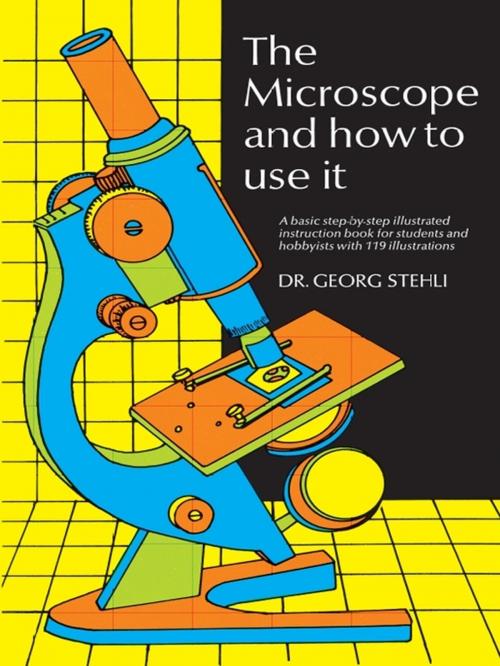The Microscope and How to Use It
Nonfiction, Science & Nature, Science, Biological Sciences, Electron Microscopes & Microscopy, Other Sciences, Applied Sciences| Author: | Dr. Georg Stehli | ISBN: | 9780486137216 |
| Publisher: | Dover Publications | Publication: | March 13, 2012 |
| Imprint: | Dover Publications | Language: | English |
| Author: | Dr. Georg Stehli |
| ISBN: | 9780486137216 |
| Publisher: | Dover Publications |
| Publication: | March 13, 2012 |
| Imprint: | Dover Publications |
| Language: | English |
A world of pleasure, excitement and new knowledge awaits one who learns to use the microscope — a world in which table salt crystals appear as jewels, a drop of water swarms with life, a butterfly's wings reveal a cascade of multicolored particles. This book is for anyone who would like to enter that world, whether or not he has ever used a microscope before. No special knowledge is required. In non-technical language and with generous use of illustration, the author explains how a microscope works and what kind to use; how to adjust the instrument and position the specimens to be viewed; examination of simple objects: a human hair, feathers, milk. At the same time, he shows how to prepare the objects, what to purchase for the purpose, how to care for it; one's every question is anticipated and clearly answered. The fundamentals understood, the reader is taken into further exploration viewing insect parts, diatoms, plankton, molds, leaves, ferns, fruit rinds, fish scales, animal parts. As we proceed, we learn step by step the techniques involved: use of chloroform, preparation of permanent slides, mounting in glycerine, preparing dye solutions, dissection, and blood smearing. We learn how to detect fat, find Vitamin C in food substances, prepare a frog for examination, view and distinguish bacteria, use the oil-immersion objective, dye bacilli spores, do microphotography, cut sections with the microtome.
Following Dr. Stehli's careful instructions, we have entered and gone well into the fascinating world of microscopy. The invention of the microscope itself started science on new courses, entire fields of new knowledge. The use of a comparatively simple microscope today can start one on a lifetime interest, an absorbing hobby, a career in science, or a permanent addition to one's cultural background. This book provides all the help needed, whether one is adult or student, hobbyist or scientifically serious, seeking education or merely curious about the minute world that exists all about us. 119 photographs and drawings.
A world of pleasure, excitement and new knowledge awaits one who learns to use the microscope — a world in which table salt crystals appear as jewels, a drop of water swarms with life, a butterfly's wings reveal a cascade of multicolored particles. This book is for anyone who would like to enter that world, whether or not he has ever used a microscope before. No special knowledge is required. In non-technical language and with generous use of illustration, the author explains how a microscope works and what kind to use; how to adjust the instrument and position the specimens to be viewed; examination of simple objects: a human hair, feathers, milk. At the same time, he shows how to prepare the objects, what to purchase for the purpose, how to care for it; one's every question is anticipated and clearly answered. The fundamentals understood, the reader is taken into further exploration viewing insect parts, diatoms, plankton, molds, leaves, ferns, fruit rinds, fish scales, animal parts. As we proceed, we learn step by step the techniques involved: use of chloroform, preparation of permanent slides, mounting in glycerine, preparing dye solutions, dissection, and blood smearing. We learn how to detect fat, find Vitamin C in food substances, prepare a frog for examination, view and distinguish bacteria, use the oil-immersion objective, dye bacilli spores, do microphotography, cut sections with the microtome.
Following Dr. Stehli's careful instructions, we have entered and gone well into the fascinating world of microscopy. The invention of the microscope itself started science on new courses, entire fields of new knowledge. The use of a comparatively simple microscope today can start one on a lifetime interest, an absorbing hobby, a career in science, or a permanent addition to one's cultural background. This book provides all the help needed, whether one is adult or student, hobbyist or scientifically serious, seeking education or merely curious about the minute world that exists all about us. 119 photographs and drawings.















